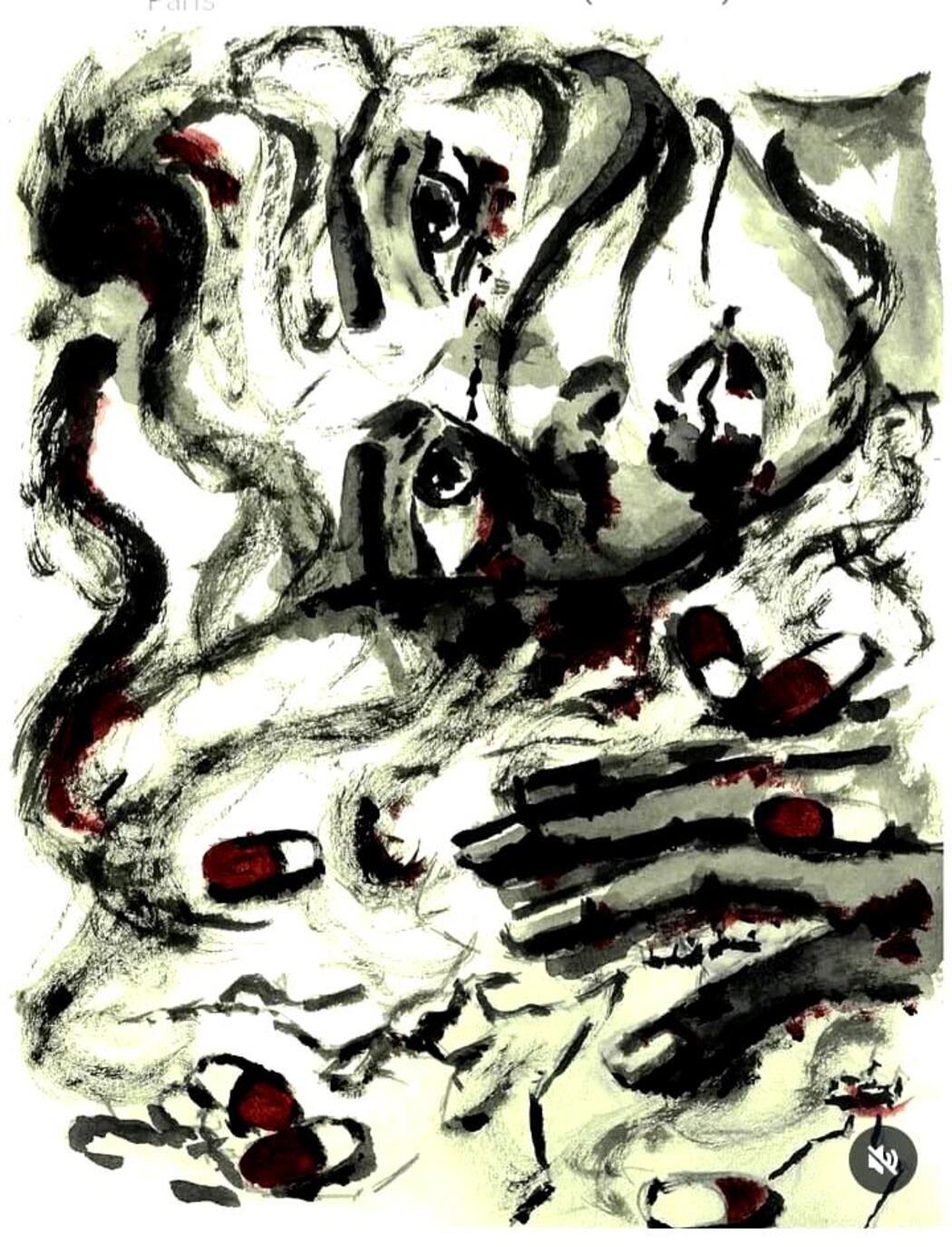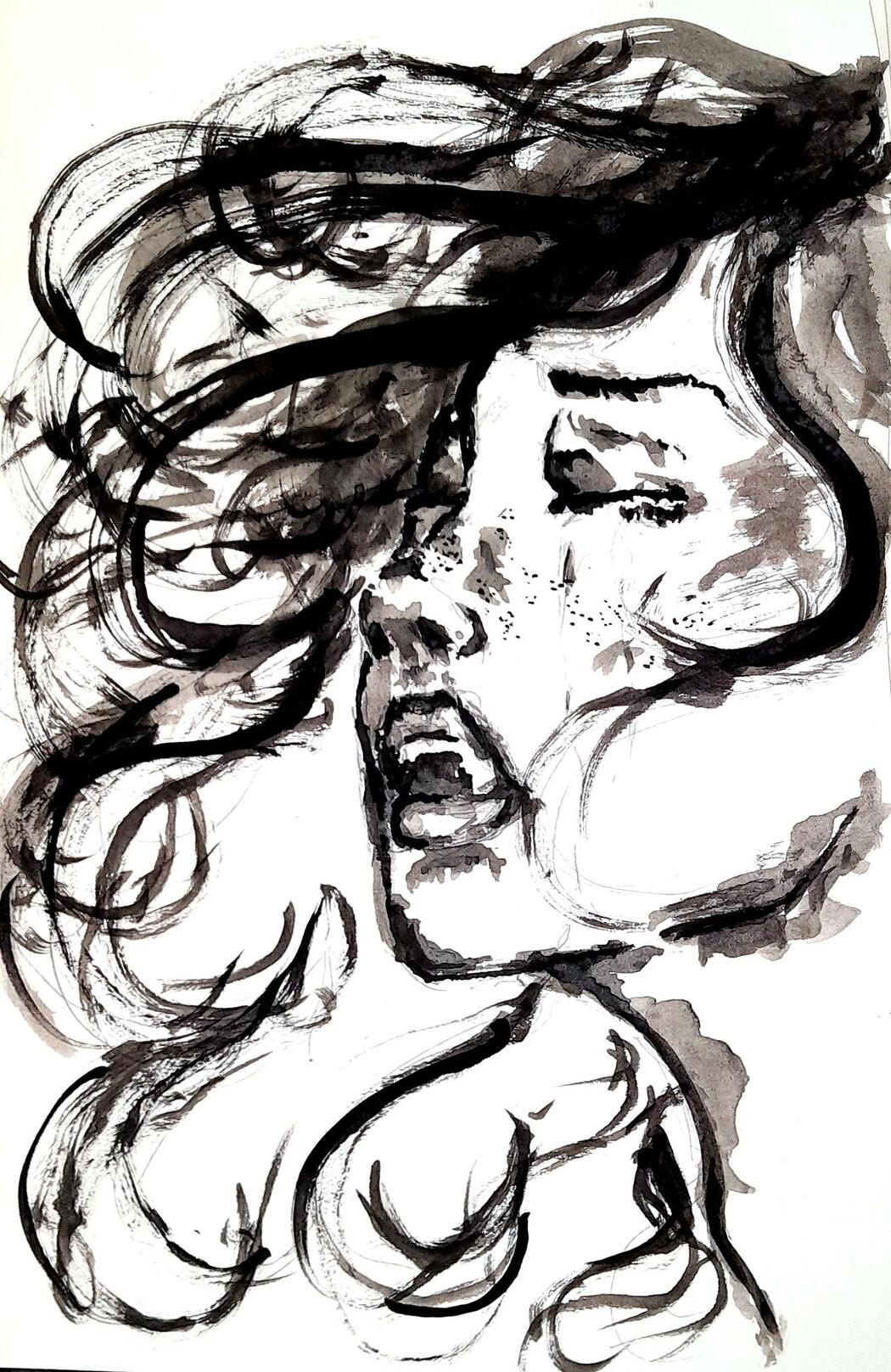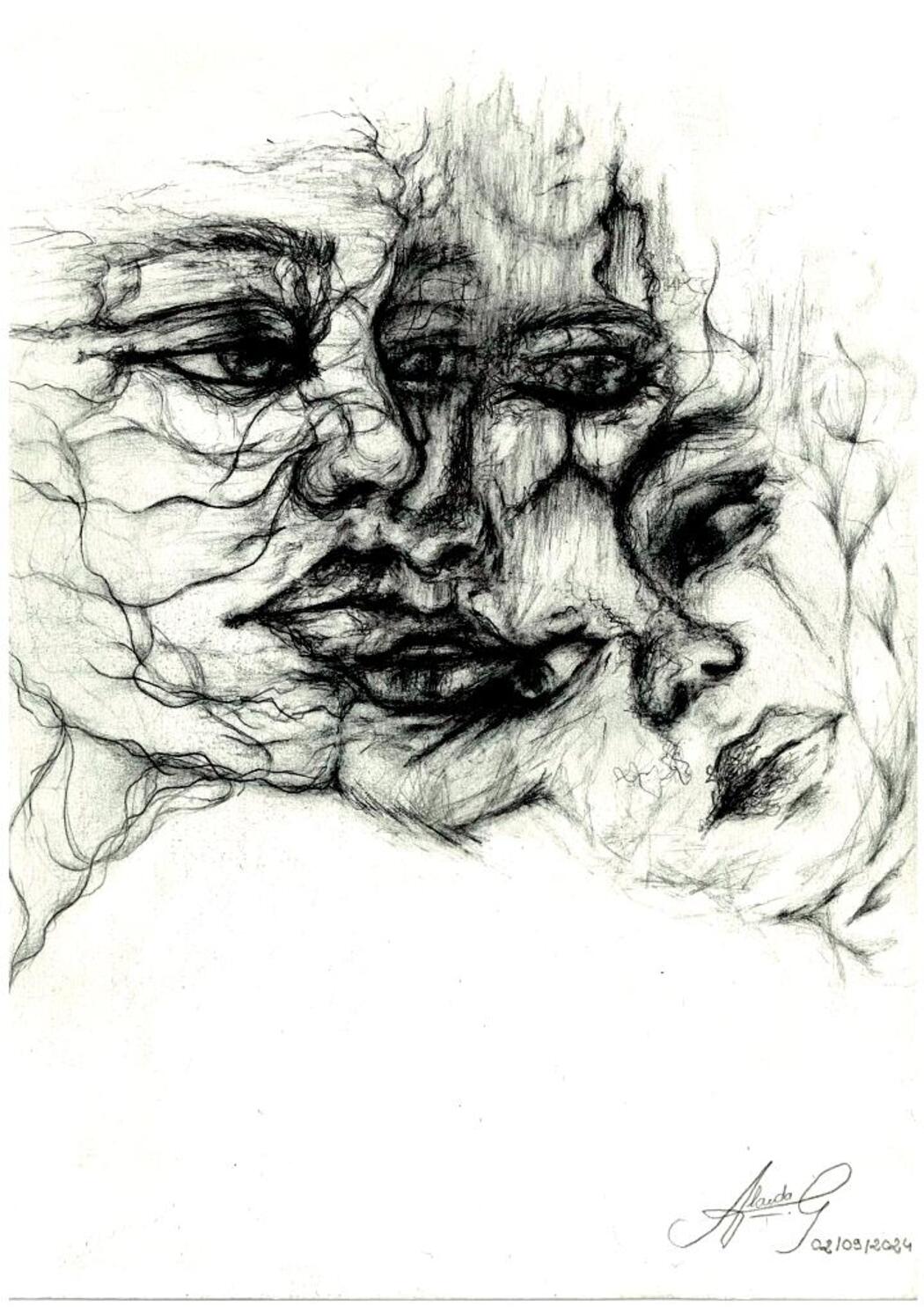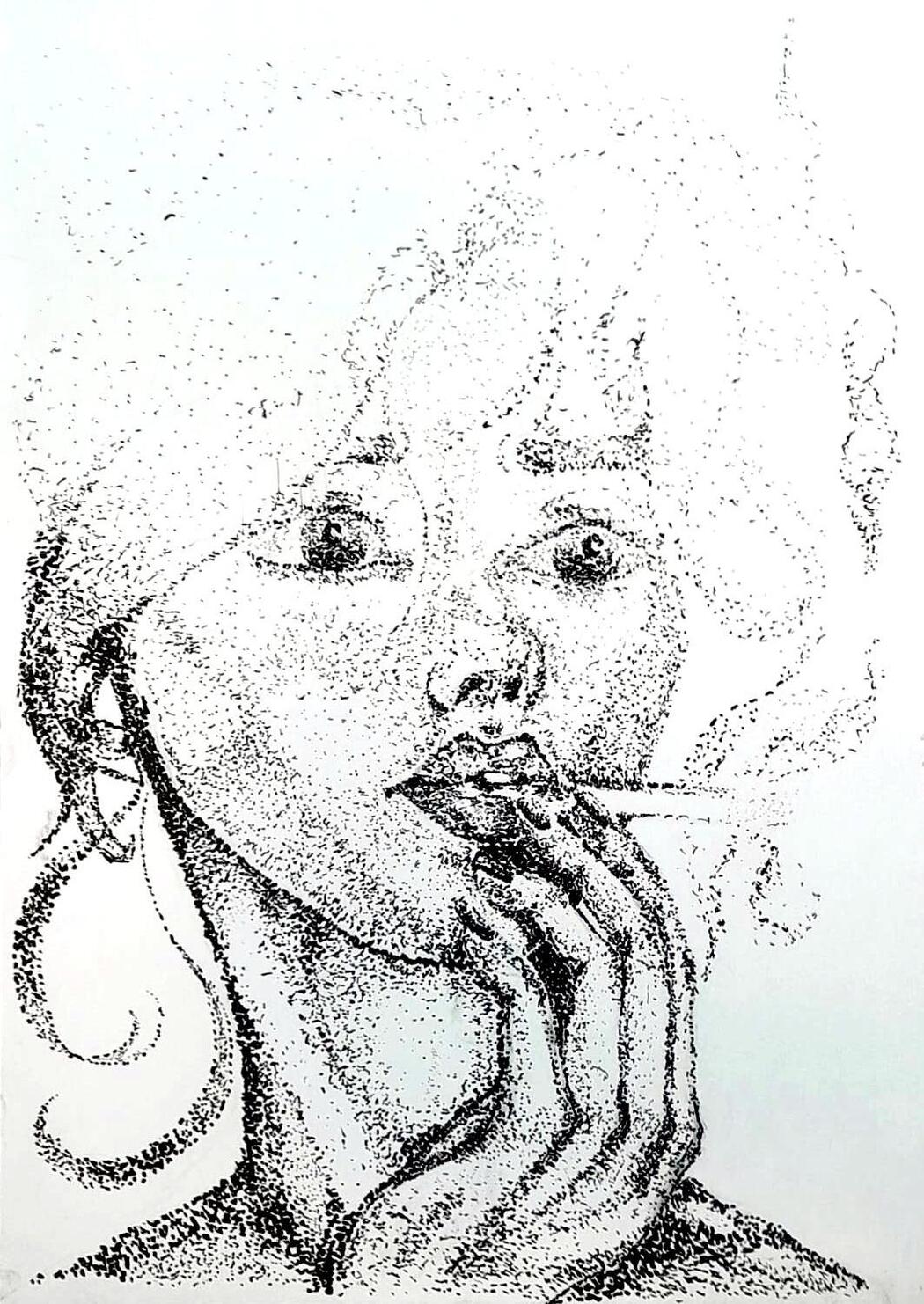Alauda
 Alauda Georges | Overdose | 2025
Alauda Georges | Overdose | 2025
You describe drawing as a vital necessity. Can you share what first prompted your return to art after your pause?
I had lost all desire to live. My body was still there, but I wasn’t. One day, I found a pencil. I didn’t want to “draw” — I needed to express something, but not in words. Not just “I’m sad,” but “This is what my sadness looks like.” This shape, this blur, this silence — that’s how I felt. The gesture of drawing anchored me. It didn’t heal me, but it gave me something to hold onto. It gave me a voice when I had none.
Many of your works explore themes of dissociation and fragmentation. What do these themes mean to you personally?
These are not just themes — they are states I live in. I often say “I feel weird,” but what I mean is: my mind is drifting, my spirit has left my body and I don’t know where it’s gone. Being there but no longer being there — it’s part of my daily reality. These moments are both remnants of trauma and its living echoes. In my art, I try to make those invisible states visible.
 Alauda Georges | No more silence | 2025
Alauda Georges | No more silence | 2025
How does working in black and white help convey the emotional depth of your pieces?
Black and white is more than a choice — it’s a reflection of how I see the world. In my life, colors have disappeared. I’m stuck in all these shades of pain. Without color, everything becomes deeper. Every line, every shadow carries weight. It strips things down to their essence. There’s no distraction. Just truth, and emotion in its rawest form.
Can you tell us about a specific piece that was especially difficult — or healing — to create?
Regarde-moi disparaître was both difficult and necessary. There’s a gaze in it — an almost accusatory look that says: “Look what you did to me. Look where I am now.” But behind that, there’s also a timid, gentle look — a faint desire to exist. To be seen, maybe. The piece is about vanishing, but also about still being here, even if only barely. Creating it didn’t save me, but it allowed something silent inside me to speak.
 Alauda Georges | Me, Myself and I | 2025
Alauda Georges | Me, Myself and I | 2025
Your work spans illustration, textiles, video, and drawing. How do these mediums interact in your creative process?
Each medium is a different form of expression. Sometimes, I need to draw. Sometimes, I need to move, stitch, film, whisper. I let the emotion guide me. These disciplines are not separate — they breathe together. They allow different facets of the same feeling to emerge. They’re just different ways of saying the same unspeakable thing.
How do you navigate the line between personal vulnerability and public sharing in your art?
I share only what has already scarred over — never the open wound. But I create from a place of truth. My work isn’t about asking for pity. It’s about reaching those who feel the same. I want to tell them: You are not alone. If my drawings speak to you, then I want to honour your survival. I want to encourage your healing. I want to say: I see you.
 Alauda Georges | Fading Girl | 2025
Alauda Georges | Fading Girl | 2025
Silence, memory, and the body are recurring motifs. What role do they play in your visual storytelling?
Silence is where the loudest screams hide. The body — fragile, fragmented — carries everything words can’t say. My portraits often hold a veiled intimacy, a way of showing emotion without exposing everything. Memory, for me, is vast and unstable. Sometimes it protects, sometimes it destroys. Remembering can hurt. Forgetting can too. In my work, I explore that double edge.

Leave a Reply
You must be logged in to post a comment.